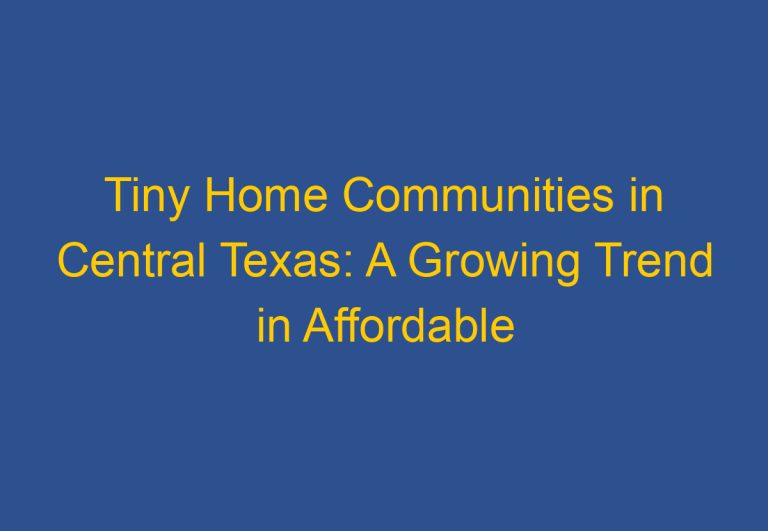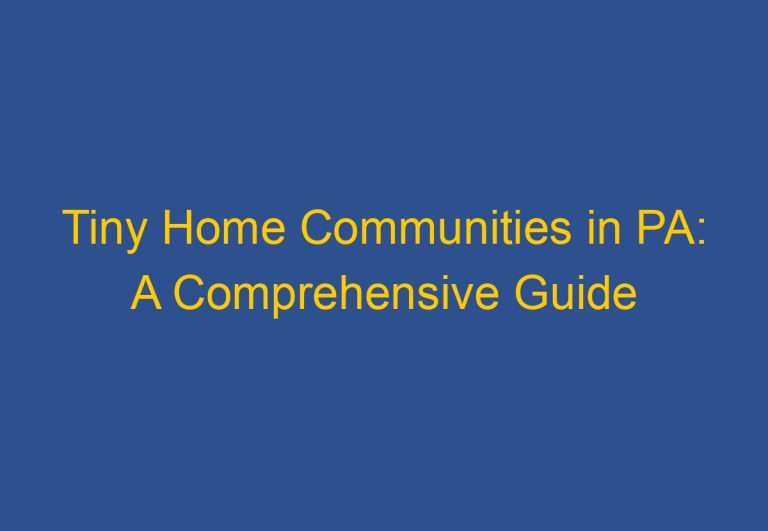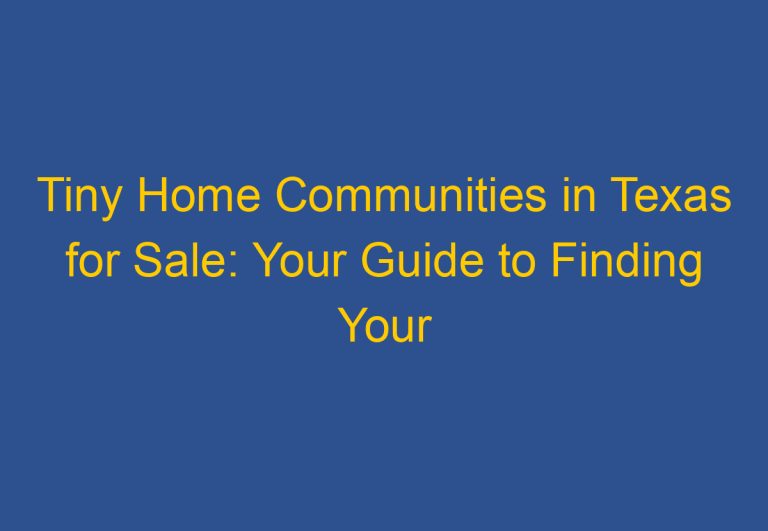Tiny Home Communities in USA: A Growing Trend in Sustainable Living
Tiny homes have become a popular and affordable housing option for many individuals in the United States over the past few years. These small, portable homes have captured the attention of people looking to downsize, simplify their lives, and reduce their carbon footprint. While some choose to live in their tiny homes on their own property, others have opted to join tiny home communities.
Tiny home communities are becoming increasingly popular across the United States, providing a sense of community and shared values for those who choose to live in them. These communities offer a unique living experience that is often more affordable than traditional housing options, making them an attractive choice for those looking to save money or live a more sustainable lifestyle. Many of these communities also offer shared amenities such as community gardens, laundry facilities, and recreational spaces.
Exploring Tiny Home Communities in the USA
Tiny home communities are gaining popularity in the USA. These communities are designed for people who want to live in a smaller space, while still enjoying the benefits of a traditional home. In this section, we will explore the benefits of tiny home living, legal aspects and zoning laws, and financial considerations.
Benefits of Tiny Home Living
Tiny homes offer a range of benefits to their residents. They are affordable, eco-friendly, and can be customized to suit individual needs. Tiny homes are also low-maintenance, which means that residents have more time to enjoy their hobbies and interests.
In addition, tiny home communities provide a sense of community and support. Residents can share resources and ideas, and work together to create a sustainable and enjoyable living environment.
Legal Aspects and Zoning Laws
Before moving into a tiny home community, it is important to understand the legal aspects and zoning laws. Some cities and states have specific regulations regarding tiny homes, which may affect where you can park your home or how you can use it.
It is important to research the local regulations and consult with a professional before making any decisions. Many tiny home communities are located in RV parks or on private land, which may have different regulations than traditional residential areas.
Financial Considerations
Tiny homes are generally more affordable than traditional homes, but there are still financial considerations to take into account. In addition to the cost of the home itself, residents must also consider the cost of land, utilities, and maintenance.
However, many tiny home communities offer shared resources and amenities, which can help to offset some of these costs. Residents can also save money on utilities and other expenses by living in a smaller space.
Overall, tiny home communities offer a unique and rewarding living experience. By understanding the benefits, legal aspects, and financial considerations, you can make an informed decision about whether tiny home living is right for you.
Key Locations and Amenities
Notable Tiny Home Communities
Tiny homes are becoming increasingly popular in the United States, with many communities popping up across the country. Some notable tiny home communities include Escalante Village in Colorado, Cedar Springs Tiny Village in Ohio, and Lemon Cove Village in California. These communities offer a range of tiny homes for sale or rent, with amenities such as community gardens, fitness centers, and laundry facilities.
For those seeking a rural lifestyle, Fresno Village in California is a community designed for low-income and formerly homeless individuals and families. It features 22 tiny homes, as well as shared amenities such as a community garden and laundry facilities. Meanwhile, for those looking for an urban tiny home community, Tiny House Block in Minnesota is situated within walking distance of numerous hiking trails and boasts the Pine House Cafe and Tavern, offering a variety of dining options from classic to modern.
Amenities and Lifestyle Features
Tiny home communities come with a range of amenities and lifestyle features. Many communities offer green spaces, nature trails, and fishing docks for those who enjoy spending time outdoors. For those who prefer to stay indoors, amenities such as fitness centers, pools, and dog parks are often available.
In addition to these amenities, many tiny home communities offer a strong sense of community. Residents often share a like-minded approach to living, which can lead to a strong sense of camaraderie and support. Some communities also offer landscaping and maintenance services, which can make tiny home living more convenient and hassle-free.
Overall, tiny home communities offer a unique living experience that can appeal to a wide range of individuals. With a range of locations and amenities available, there is sure to be a community that fits the needs and preferences of any prospective tiny home resident.
Frequently Asked Questions
What are the zoning laws for tiny home communities across different states?
Zoning laws for tiny home communities vary from state to state and from city to city. In some areas, tiny homes are allowed as accessory dwelling units (ADUs) on a property with a larger primary residence. In other areas, tiny homes are allowed as standalone residences on their own land. It is important to research the zoning laws in the specific area where you are interested in living in a tiny home community.
How do permanent tiny home communities compare to traditional housing?
Permanent tiny home communities offer a unique and minimalist lifestyle that can be quite different from traditional housing. Tiny homes typically have a smaller footprint, which means less space for possessions and a smaller environmental impact. However, they can also be less expensive to maintain and can offer a sense of community that is often lacking in traditional housing.
What are the most affordable tiny home communities in the United States?
There are many affordable tiny home communities across the United States. Some of the most affordable options can be found in rural areas or in communities that have a shared ownership model. It is important to research the costs associated with each community, including any fees or maintenance costs.
Which tiny home communities offer luxury amenities?
There are several tiny home communities that offer luxury amenities, such as swimming pools, fitness centers, and high-end finishes. These communities often come with a higher price tag, but can offer a luxurious and unique lifestyle.
What options are available for seniors interested in joining tiny home communities?
There are several tiny home communities that cater specifically to seniors. These communities often offer amenities such as healthcare services, transportation, and social activities. It is important to research the specific offerings of each community to find the best fit for your needs.
What are the average costs associated with living in a tiny home community?
The average cost of living in a tiny home community varies depending on the location and amenities offered. Some communities have a shared ownership model, which can reduce costs, while others require residents to own their own tiny home. It is important to research the costs associated with each community to determine if it is financially feasible.










